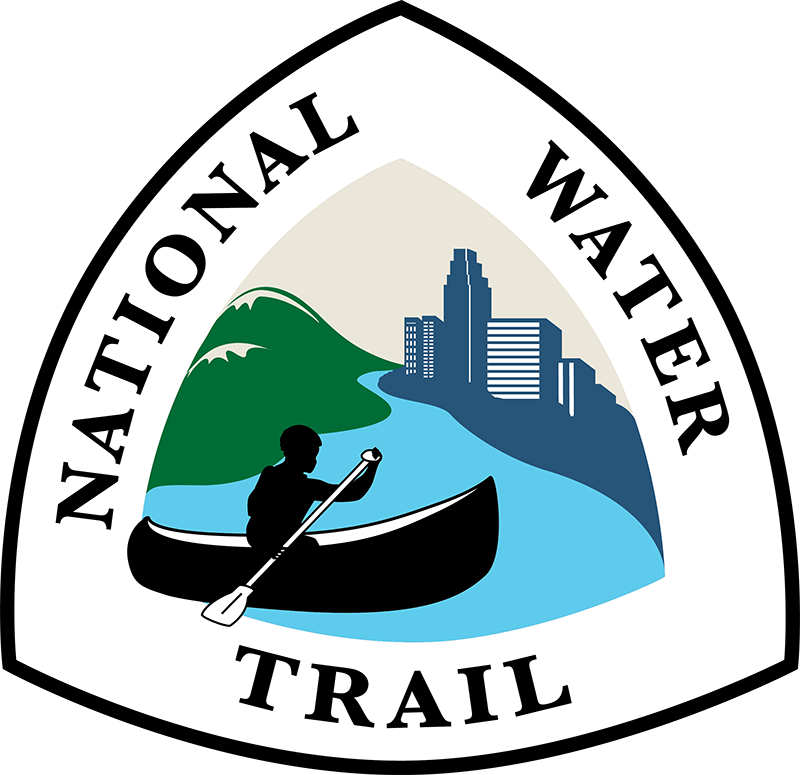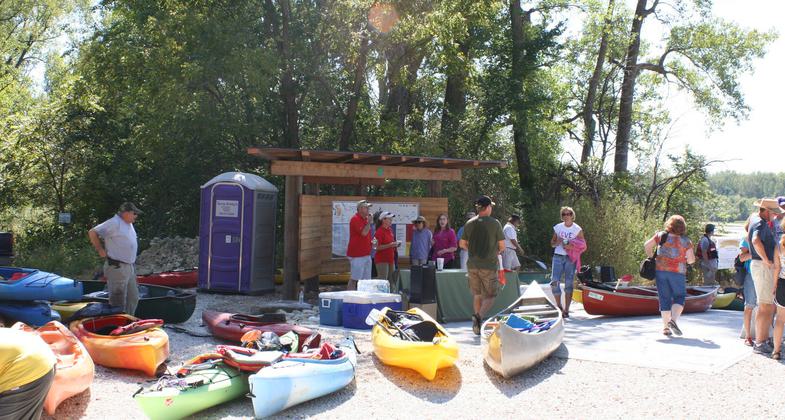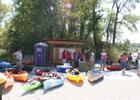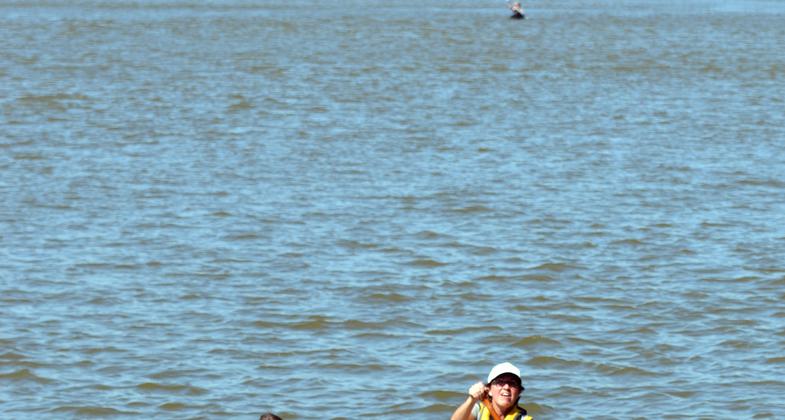Kansas River Trail
check with the trail manager for updated details before visiting.

Kansas River Trail
National Park Service
National Water Trail
- Length
173 miles
- Elevation Gain
--
- Route Type
out & back
- Length
173 miles - Elevation Gain
-- - Route Type
out & back
The Kansas River is the world's longest prairie river starting at Junction City, Kansas and flows 173 miles to Kansas City where it flows into the Missouri River.
Location: Junction City in north-central Kansas and flows 173 miles to Kansas City at the confluences with the Missouri River.
- States: Kansas
- Counties: Douglas, Geary, Jefferson, Johnson, Leavenworth, Pottawatomie, Riley, Shawnee, Wabaunsee
- Cities/Townships: 21 communities
The Kansas River is the world's longest prairie river starting at Junction City, Kansas, and flows 173 miles to Kansas City where it flows into the Missouri River.
The Kansas River (also known by the locals as the Kaw) starts at Junction City where the Smokey Hill River and Republican Rivers meet to become the Kansas River. As the world's longest prairie river, it meanders through eastern Kansas for 173 miles to Kansas City where it flows into the Missouri River. The outstanding scenic, recreational, historic, and natural characteristics of the river make it a major asset for Kansas providing drinking water, electrical power, irrigation, wildlife, native plant habitat, and economic and recreation opportunities.
The river is a shallow, sandy-bottomed river with steep banks and sandbars bordered by natural riparian corridors of native trees, shrubs, and grasses. The sandbars and islands within the high water marks make great places for picnicking, wildlife viewing, fishing, and relaxing. Most access points are located in communities along the river making it easy to take a break or to go site seeing. Even though the river passes through many communities, including Manhattan, Topeka, Lawrence, and Kansas City, it maintains its sense of wildness and native beauty.
The Kansas River is one of three rivers in the state of Kansas that is considered a publicly navigable river. This designation provides the public use of the river corridor below the normal high water mark; provided they can gain legal access to it. The corridor, from its origin in Junction City to its end in Kansas City encompasses 18,800 acres of parkland.
Float trips on the Kansas River are appropriate for novice boaters and families; however, it takes some muscle power to paddle down the river after a rain event or when the federal reservoirs on the tributaries are releasing water causing the river to be more challenging to paddle. The river can be challenging but can be enjoyed by most paddlers with preparation and awareness of water and weather conditions.
Paddling the Kansas River is an adventure, experiencing the dramatic views of the Flint Hills prairie, open fields of pastures and farm fields, and the steep limestone hills in eastern Kansas. Floating the river takes the visitor through one of the largest remaining tracts of tall-grass prairie. As the river flows east, the remnant oak-hickory stands are similar to ecosystems found in the easternmost states. The transition areas between these major habitats are biologically rich areas with an amazing diversity of plants, insects, and animals. It is common to see bald eagles, blue herons, deer, and beaver any time of year. Gulls, pelicans, and other migratory bird species can be seen during the spring and fall. Least Terns and Piping Plovers (both considered endangered) nest on the sand bars of the Kansas River.
Fossils can be found from ancient times when Kansas was covered by shallow seas. The river roughly parallels the southernmost tip of the most recent glacier, which covered most of North America some 6,000,000 years ago. Bones from Ice Age animals can be found on sandbars, including hairy mammoths, saber-toothed cats, giant beavers, and other extinct creatures.
There are historical sites along the full length of the river. Artifacts reveal that nomadic hunter-gatherers were the first humans in the region. The Hopewell culture had established farms from 200 B.C. to 700 A.D. Kansa Indians, after whom the state of Kansas and the river were named, lived along the river from the early 1700s. The Lewis and Clark Expedition camped at the confluence of the Missouri and Kansas Rivers for three days. The site is now Kaw Point Park, a city park in Kansas City, KS with riverside trails along both the Missouri and Kansas Rivers. Kaw Point Park recognizes the Lewis and Clark Expedition and all the native tribes that once lived in the region with the Confluence of Nations Plaza. The park also has a 500-seat amphitheater that overlooks both the Kansas and Missouri Rivers available for dramatic and musical presentations.
The Oregon Trail was the first of the major emigration trails pioneers used to cross the"Great American Desert' to California and Oregon. Eventually, people stayed and homesteaded in the region. Lecompton, Lawrence, Kansas City, and Topeka are all part of the political story of Kansas becoming a state during the turbulent years before the Civil War.
Visitors are always amazed by the beauty of the region, the variety of experiences, and the vastness of the prairies. The Kansas River offers a new adventure with every trip.
Accessibility Information
No text provided.
Allowed Uses:
Boating, motorized Boating, human-powered SwimmingOther Activities
- Camping
- Fishing
- Heritage and history
- Hunting
- Wildlife viewing / observation
Public Contact
Roger WolfeKansas Department of Wildlife, Parks and Tourism
399 SW Wanamaker Road
Topeka, KS 66606
[email protected] • 273-6740
More Details
- Elevation (low): --
- Elevation (high): --
- Elevation (cumulative): --
- Part of a Trail System? No
- Surface (primary): --
- Surfaces (additional): Rock, smooth, Water, calm
- Tread Width (average): 0"
- Tread Width (minimum): 0
- Running length (minimum): --
- Tread Grade (average, percent): --
- Tread Grade (maximum):
- Running length (maximum): --
- Cross-slope (average, percent): 0
- Cross-slope (maximum): --
- Running length (maximum): --
- Certified as an NRT
Jul 11, 2012












